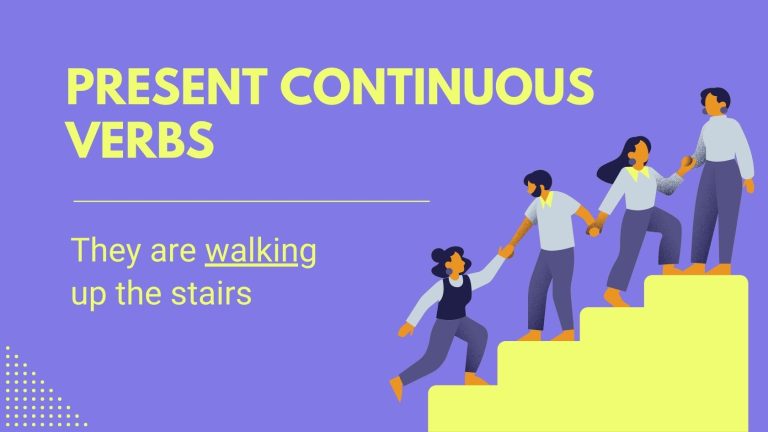Present Continuous Verbs

Present continuous verbs are all about actions happening right now. They show what someone or something is doing at this moment. So, if you’re moving, talking, or even reading, you’re using present continuous verbs.
Present Continuous Examples
Let’s look at present continuous verbs through some simple actions.
- He is fixing the light.
- She is holding the ladder.
- They are working together.
When we say, “He is fixing the light,” it’s like we’re watching him do it right now. “She is holding the ladder” and “They are working together” also show us people doing things at this very moment.
These sentences help us picture exactly what’s happening, making our words come to life. Here are some more examples:
- Sean is driving. He is not walking.
- Rosa is working. She is not driving.
- Sean and Rosa are playing. They are not working.
Using the present continuous tense, we can paint a picture of what Sean and Rosa are doing. This tense brings their actions to life, showing us how their day unfolds.
Here are a couple more:
- Sean is running. He isn’t walking.
- Rosa is skiing. She isn’t biking.
- They are fixing the light. They aren’t fixing.
The present continuous tense helps us know what’s happening right now.
Present Continuous Structure
Here’s the structure for the present continuous tense.
Subject + am/is/are + verb-ing
- Subject: This is who or what is doing the action (e.g., I, you, he, she, it, we, they).
- am/is/are: This part changes based on the subject. Use “am” with “I”, “is” with “he, she, it”, and “are” with “you, we, they”.
- verb-ing: This is the base form of the verb plus “-ing” (e.g., eating, running, playing).
This simple formula helps us create sentences that are happening now or in the near future.
By combining a subject with “am,” “is,” or “are,” and adding “-ing” to a verb, we can create sentences that show the action as it’s happening.
Present Continuous Verbs
Present continuous verbs are one of the 12 verb tenses in the English language. By understanding present continuous verbs, we can communicate about the present.
For instance, saying “I am typing” instead of just “I type” brings the listener right into the moment with you. “I type” is simple present form, good for habits, facts, or every day routines.
What are your thoughts on using present continuous verbs? Do you have any questions about how to apply them in your daily conversations or writing? Feel free to share your comments or ask questions below.
